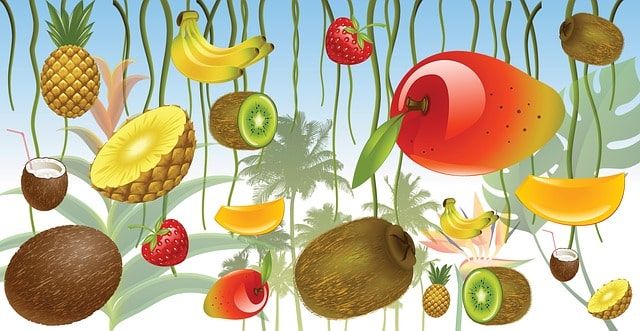The other bioactive compounds of tropical fruits: polysaccharides
There are substantial amounts of polysaccharides in the peel, skin, seeds, and pulp of tropical fruits, demonstrating different biological activities such as antioxidant, anti-fatigue, anti-inflammatory, hepatoprotective, gastroprotective, and immunomodulatory.

Tropical fruits grow in tropical or subtropical climates in the geographical zone extending from 30° south latitude to 30° north latitude. The temperature in this zone varies between 16 and 36° C (61 and 96° F) during the year. Among the most consumed foods of this type are avocado (Persea americana), mango (Mangifera indica), papaya (Carica papaya), and pineapple (Ananas comosus), which are available practically all year round in areas with temperate climates.
Other fruits such as chicozapote (Manilkara zapota), guava (Psidium guajava), litchi (Litchi chinensis), mamey (Pouteria sapota), passion fruit (Passiflora edulis), rambutan (Nephelium lappaceum) and yaca (Artocarpus heterophyllus) are little known, but they are becoming increasingly sought after in domestic markets for their distinctive flavors and colors, high nutrient content and variety of bioactive compounds such as phenolic compounds, carotenoids, and fiber.
Tropical fruits also possess substantial amounts of polysaccharides in the peel, skin, seeds, and pulp; these compounds have demonstrated different biological activities such as antioxidant, antifatigue, anti-inflammatory, hepatoprotective, gastroprotective, and immunomodulatory.
Polysaccharides are polymeric carbohydrate macromolecules consisting of long chains of monosaccharide units linked by glycosidic bonds, and their molecular weight, the presence of functional groups such as sulfate or acetyl, as well as amino acids, proteins, and phenolic compounds in their structure, determine their different biological properties. However, studies establishing the precise relationship of structure and biological activity in polysaccharides for tropical fruits and by-products are limited, so more studies establishing these relationships are needed.
Mexico is one of the countries that has stood out as a region with a large number of tropical fruits that are little known and, therefore, less consumed, and that constitute a wide field of study for obtaining bioactive polysaccharides, so, in the Laboratory of Antioxidants and Functional Foods of the Center for Research in Food and Development (CIAD), research is being conducted on the characterization of the structure and biological activity of polysaccharides in tropical fruits, research is conducted on the characterization of polysaccharides present in the peel, pulp, and seed of different tropical fruits, as well as their different biological activities, to establish the health benefits that these bioactive compounds can provide to human beings.




